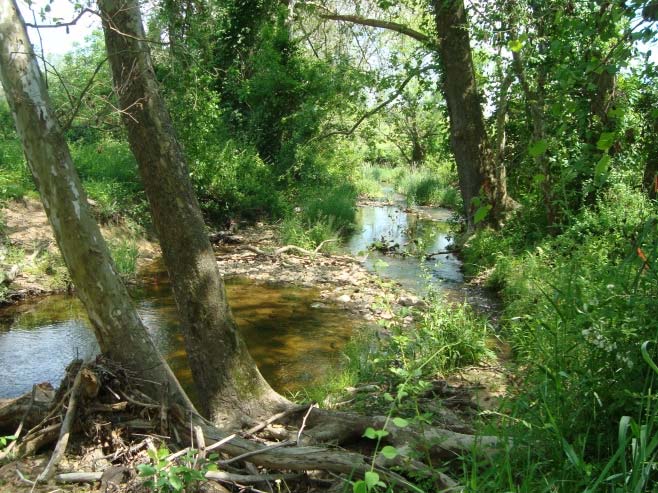Maryland Agencies Begin Stream Restoration Project in Cecil County
Pilot Project Supports Chesapeake Bay Restoration
 The Maryland Environmental Trust, a unit of the Maryland Department of Natural Resources, and the Maryland Department of Transportation State Highway Administration announced the start of a new stream restoration project along Gramies Run, a tributary of the Elk River in Cecil County.
The Maryland Environmental Trust, a unit of the Maryland Department of Natural Resources, and the Maryland Department of Transportation State Highway Administration announced the start of a new stream restoration project along Gramies Run, a tributary of the Elk River in Cecil County.
The multiagency pilot project, designed to restore streams and wetlands on private property, will be used to evaluate this restoration technique for future Chesapeake Bay restoration projects. Work will begin in December 2017, with anticipated completion in early 2019.
“Water runoff from highway surfaces can leave pollutants in streams and the bay, and we are partnering with the Department of Natural Resources to come up with innovative solutions to support bay restoration,” said State Highway Administrator Greg Slater.
The $4.3 million project, which will fulfil requirements of the federal Clean Water Act, will occur on a conservation easement co-held by the Maryland Environmental Trust and Cecil Land Trust. Property owner Edward F. Kelley authorized the work to begin on a five-acre project to stabilize the banks and plant trees along Gramies Run. The project aims to enhance natural features and improve water quality by reducing erosion, filtering stormwater, slowing water flow, and cooling water temperature through an expanded tree canopy.
“By leveraging the expertise and talents of two leading state agencies, this first-of-its-kind pilot project will improve habitat and water quality in Cecil County, and better protect and preserve our shared natural resources,” Natural Resources Secretary Mark Belton said. “We are hopeful that this partnership, which includes an innovative private and public component, will succeed and be replicated throughout the state ensuring a cleaner and healthier Chesapeake Bay.”
Restoring Gramies Run will help reduce the amount of nutrients and sediment such as nitrogen and phosphorous from entering the Chesapeake Bay, and help Maryland meet federal restoration goals. The project is part of an ongoing partnership between the Maryland Department of Natural Resources and the Maryland Department of Transportation to reduce project costs and bolster bay restoration.

 1-888-373-7888
1-888-373-7888 233733
233733